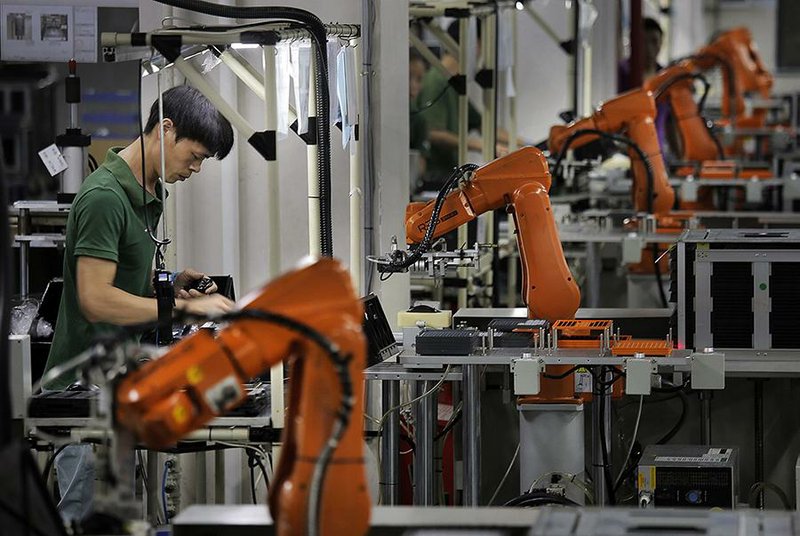Two top economic advisers of President Donald Trump have signaled that talks with China to reach the first phase of a broad trade agreement are entering the final stages when the most contentious and complex issues are debated, with no guarantee still that another breakdown will be averted.
White House economic adviser Larry Kudlow said late Thursday in Washington that "we are coming down to the short strokes" and are "in communication with them every single day." Commerce Secretary Wilbur Ross, speaking Friday on Fox Business Network, confirmed there would be a high-level call Friday, adding that there'll be a deal "in all likelihood."
As U.S. stock futures advanced on optimism for the world's largest economies, both officials added caveats, with Kudlow acknowledging a deal was close though "not done yet" and Ross saying "the devil is always in the details and we're down to the last details now."
Separately, Kudlow said the president had not yet made a decision on whether to impose -- or delay, as many expect -- new tariffs on imported cars and parts from the European Union. The president received a report from the office of Robert Lighthizer, the U.S. trade representative, and "he is considering it," Kudlow said.
Friday's call of top trade negotiators from the U.S. and China is a sign of progress. Still, the last stages of trade agreements are often where talks break down, and Trump still hasn't publicly indicated his approval. The two sides were close to concluding a pact about six months ago, only for the U.S. to claim that China backed away from verbal commitments when the time came to sign the deal.
"You don't really have the deal on anything, until you have the deal on everything," Ross said. "So it's not surprising that at the very last minute pieces are bouncing around. But I think the main thing is what the president said at the rally [Thursday] night: China wants to make a deal. We think we'd like to make a deal if it's the right deal -- this will get made in all likelihood."
Ross described phase one as "relatively limited in its scope. And what's really being debated is how much limitation will there be on the scope of phase one relative to phase two or maybe phase three."
The two sides have held working-level videoconferences in recent days focused on issues ranging from the details and timeline of Chinese purchases of U.S. agricultural goods such as pork and soybeans to commitments to curtail theft of intellectual property that Trump is demanding from China, according to people familiar with the discussions.
A U.S. demand that China spell out how it plans to reach as much as $50 billion in agricultural imports annually has been one sticking point as have discussions over what action the U.S. will take to roll back tariffs in return for a phase one deal, the people said. China has reiterated its position that removing existing tariffs is a precondition of reaching a deal.
Still, both countries have sent signals that they are intent on an agreement. China has resumed significant purchases of U.S. farm exports since Trump first announced plans for the phase one deal Oct. 11. On Thursday, Beijing also lifted a ban on American poultry that began in 2015, after the U.S. Department of Agriculture made a similar decision to allow Chinese poultry into the U.S.
"This is great news for both America's farmers and China's consumers," Lighthizer, who is leading the discussions with China, said in a statement after the lifting of the Chinese ban was announced. The government estimates American producers will be able to export more than $1 billion worth of poultry to China annually, he said.
More than 30 states stretching from Florida to Alaska suffered double-digit drops in merchandise exports to China through September of this year. Sales to the Asian nation fell 39% in Texas, where oil and gas products comprise the largest export to that country.
In Alabama, which touts its status as the No. 3 auto-exporting state, total shipments to China plunged 49% in the first nine months. Florida's merchandise sales to the country slumped 40% in the period, while West Virginia and Wisconsin each saw drops of about 25%. Product exports to China from the U.S. as a whole dropped 15% to $78.8 billion.
"Chinese demand for imports overall has been weak," said Brad Setser, senior fellow for international economics at the Council on Foreign Relations. The recovery time for U.S. products will depend on the nature of the trade deal, he said.
Information for this article was contributed by Zoe Schneeweiss, Anita Sharpe, Alex Tribou, Alex Tanzi, Steve Matthews and Yue Qiu of Bloomberg News.
Business on 11/16/2019
